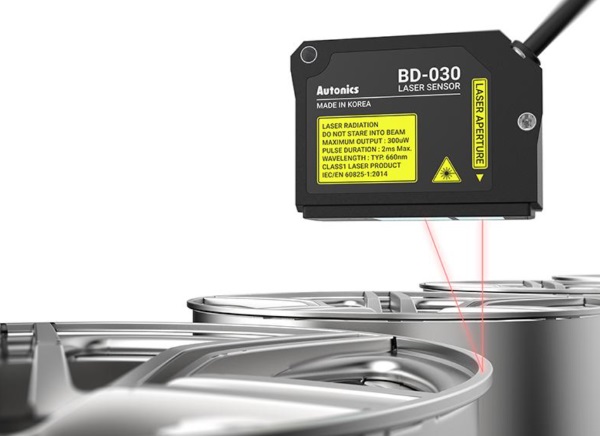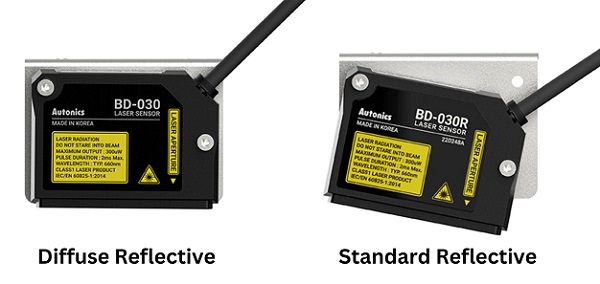Autonics’ New BD Series Redefines Laser Displacement Sensing
The new BD series laser sensors from Autonics offer more reliable measurement capabilities for uneven, reflective, or transparent materials to serve in diverse applications.
Autonics has launched the BD series, the latest innovation in laser displacement sensing technology, available in diffuse or regular reflection models. These advanced sensors offer precision measurement capabilities and can be used for various applications, such as measuring thickness and width and detecting level differences, disparities, curves, and evenness in components.

A BD-030 BD series sensor checks the evenness of automobile components. Image used courtesy of Autonics
Autonics BD Series
The BD series consists of eight sensor models. The product lineup offers five reference distances: 30, 65, 100, 300, or 600 mm. The smaller sizes (30/65/100) are available in diffuse or regular reflection, while the larger models (300/600) are only available with diffuse reflection. The largest model provides a maximum measurement range of 1000 mm. This diversity ensures an appropriate sensor for a vast majority of all industrial applications.
The main difference between diffuse and regular reflective sensors is how they measure distances. Diffuse reflective sensors emit light that hits an object and reflects in multiple directions, while regular reflective sensors emit light that reflects directly back to the sensor. Diffuse reflective sensors are better suited for applications involving irregular or matte surfaces, while regular reflective sensors are best for smooth, reflective surfaces.
Functionalities of the BD Series Sensor
The BD series sensors have significant advantages in their exceptional detection capability. Unlike conventional sensors that may struggle with different materials, BD sensors excel across the spectrum. They can detect various materials, including stainless steel, rubber, transparent objects, and even reflective objects. This versatility is complemented by a user-friendly design that includes detachable sensor head/amplifier units for easy maintenance–a practical advantage in demanding operational environments.
The BD sensor series sensors also integrate sophisticated calculation functionalities, enabling precise measurements through the linear placement of multiple sensors around an object. This setup allows for accurate calculations such as subtraction, addition, or averaging of measurements, all conveniently displayed on the sensor's LED screen. Up to 8 sensor amplifier units can be connected. When using this functionality, the amplifier units are automatically sorted when connected but require individual power supplies.

The sensors have dedicated brackets for each model to ensure accurate resolutions and measurements. Autonics does this because the regular reflective-type sensors require installation at specific angles. Image used courtesy of Autonics
Autonics designed the BD series to ensure measurement stability amid external variables like mechanical noise. It incorporates advanced filters, including movement average, differential, and median filters. These features guarantee reliable data collection across diverse operational conditions.
Autonics also provides specialized software called "atDisplacement," designed to work with the BD sensors. This software contains advanced features for comprehensive data analysis and visualization. It offers live data displays, graphical representations, and waveform analysis tools, which enable users to interpret data intuitively and make real-time decisions based on measurements.
Application Examples
The BD series sensors are highly versatile and can be utilized in various applications. For instance, in semiconductor production lines, the BD series sensors can gauge the evenness of wafer surfaces. Additionally, these sensors are well-suited for applications in engine block manufacturing, where they can measure the height of bonding dispensed on the engine block. These sensors' versatility, durability, and ease of maintenance make them well-suited for numerous industrial settings beyond these examples.

 Facebook
Facebook Google
Google GitHub
GitHub Linkedin
Linkedin







